The Future of Warfare Trends and Predictions: What to Expect in Modern Military Tactics
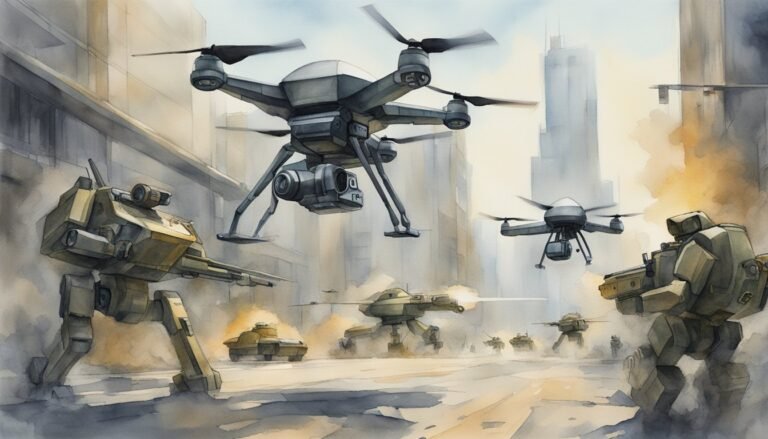
Imagine a world where the battlefield is no longer just physical but also digital and automated.
The future of warfare is evolving rapidly, driven by advancements in technology and shifts in global power dynamics. Advanced capabilities such as artificial intelligence, automation, and cybersecurity are shaping the way military operations are designed and executed. These shifts will not only influence how conflicts are fought but also who holds the strategic advantage.

Geopolitical changes are also playing a major role.
Countries like China and Russia are challenging the strategic positions of Western nations.
As these nations invest more in military advancements, the United States must adapt its strategies to maintain an edge.
You might see a rise in precision weapons, enhanced intelligence gathering, and a greater emphasis on space and cyber domains to stay ahead.
Considering these trends, it’s clear that the military landscape is set for a significant transformation.
The ability to predict and adapt to these changes will define future conflicts.
Keeping a close eye on these developments can help you understand the strategic shifts and technological innovations shaping the future of warfare.
Key Takeaways
- Advanced technology is driving changes in military operations.
- Geopolitical shifts are influencing military strategies.
- Staying ahead requires adapting to new trends and innovations.
Assessing Current Geopolitical Landscapes

Numerous geopolitical shifts are influencing military strategies worldwide.
Countries like China and Russia are altering alliances and economic power is shifting globally.
Rise of New Powers and Alliances
You are watching the rise of China as a significant military and economic force.
This shift is important for the global military balance.
China’s advancements in technology and military strength are changing the nature of alliances in the Indo-Pacific region.
China’s relationship with the United States is filled with competition, leading to new military strategies and defense policies in the region.
Russia’s actions in Europe, particularly its influence in Ukraine and other neighboring countries, are causing upheaval.
A revanchist Russia is leading to stronger alliances within NATO as countries look to counter Russian moves and secure their borders.
The turmoil in the Middle East, including conflicts involving Iran, is also reshaping alliances and military strategies in the region.
Global Economic Shifts
Economic shifts are affecting military capabilities and alliances.
As China’s economy grows, it is increasing its defense budget and technological investments, impacting the balance of power.
You see the United States making strategic decisions to counterbalance China’s growing influence in Asia, reflecting new economic realities and priorities.
In Europe, economic instability and Brexit are influencing military spending and alliances.
Countries are re-evaluating their military commitments and investments.
In the Middle East, economic struggles are contributing to ongoing conflicts and instability, affecting regional security dynamics and U.S. military involvement.
The economic rise of China and the shifting dynamics in the Middle East are prime examples of how economic trends directly influence military strategies and alliances.
Understanding these shifts helps in predicting future conflicts and preparing for changing defense requirements.
Technology’s Role in Future Conflicts
Technology has become essential in modern military strategies.
From artificial intelligence to autonomous systems, advancements are shaping how conflicts unfold and how armies prepare and respond.
Artificial Intelligence and Cyber Warfare
Artificial Intelligence (AI) is revolutionizing military operations.
With AI, you can analyze huge amounts of data quickly, allowing you to make faster and more accurate decisions.
AI enhances information warfare by providing real-time intelligence and threat detection.
Cyber warfare is another key area where AI comes into play.
AI-powered systems can detect and counter cyber threats more effectively. Offensive cyber capabilities are being developed for disrupting enemy networks and communications.
With AI, these operations can be automated, making responses quicker and more precise.
Autonomous and Unmanned Systems
Autonomous systems, like drones and unmanned vehicles, are changing the battlefield.
These systems can be used for surveillance, logistics, and even direct combat.
Unmanned aerial vehicles (UAVs) can gather intelligence without risking human lives, offering a safer approach to reconnaissance.
Robotics are also becoming crucial in military operations.
Robot soldiers and unmanned ground vehicles can perform dangerous tasks such as bomb disposal or exploring hazardous environments.
This reduces the risk to human personnel and increases operational efficiency.
Connectivity and advanced hardware allow these systems to operate seamlessly, integrating with existing military technologies to create a more cohesive and responsive force.
The rise of these technologies is setting the stage for a new era in military strategy.
Enhancing Military Capabilities and Doctrine
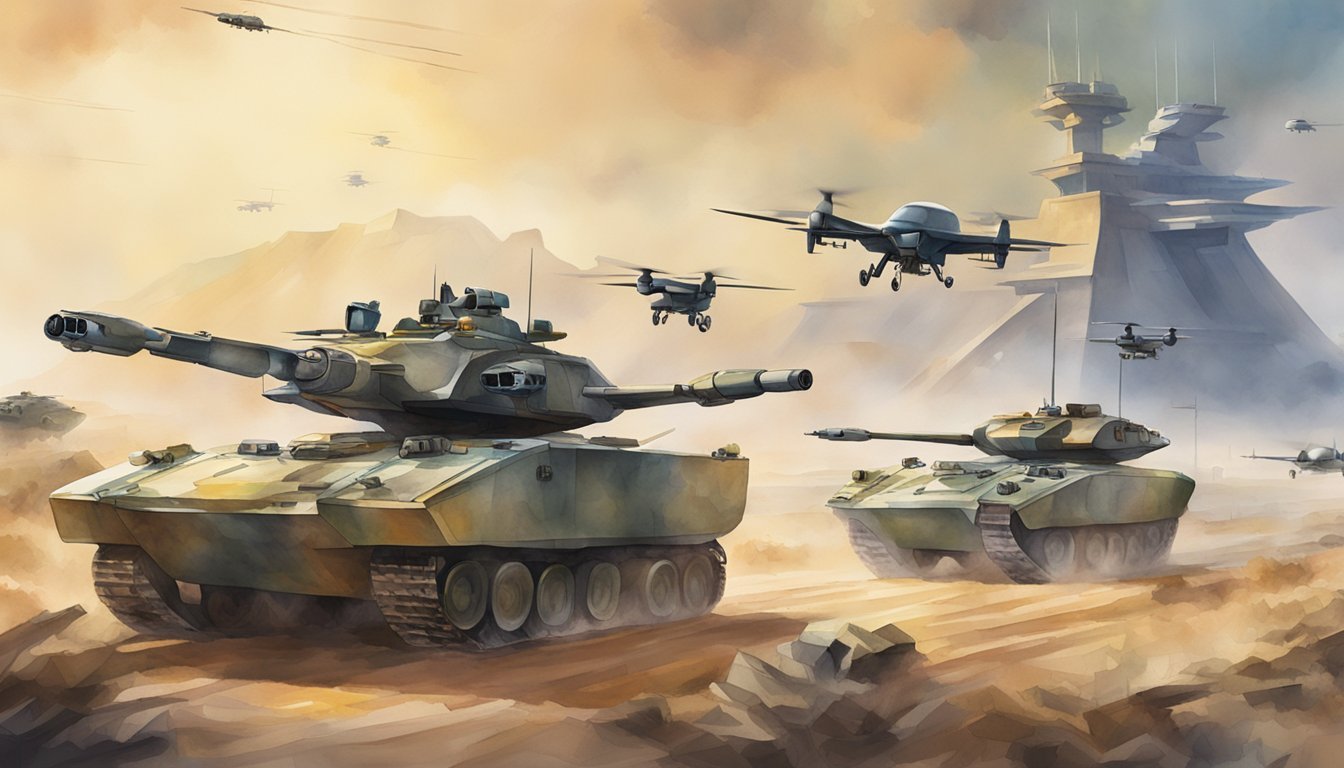
New defense systems and evolving combat strategies are crucial for maintaining military superiority.
These changes involve advanced technologies and updated doctrines to address modern warfare threats.
Revolutionary Defense Systems
You will see major advancements in defense systems, especially with hypersonic missiles and directed energy weapons.
Hypersonic missiles can travel at speeds exceeding five times the speed of sound, making them hard to intercept.
Directed energy weapons, such as lasers, offer precise targeting to neutralize threats swiftly.
The U.S. defense strategy focuses on integrating these technologies to enhance the capabilities of various branches, including the Air Force, tanks, and ships.
Improved command, control, and communications systems ensure better coordination among joint forces.
Climate change also impacts defense, requiring adaptable logistics and infrastructure.
Changing Combat Strategies
Modern combat strategies prioritize flexibility and rapid response.
Information warfare and cyber operations are among the emerging tactics.
Gray-zone operations, which fall between war and peace, gain importance in maintaining strategic advantages without direct confrontation.
The doctrine evolves to include non-traditional combat methods, emphasizing hybrid warfare.
New strategies focus on joint force operations, where multiple military branches work together seamlessly.
Enhanced training and simulation exercises develop readiness and adaptability.
Air support and logistics become vital in sustaining these efforts, ensuring quick deployment and support in varied environments.
Impact of Space and Cyber Domains
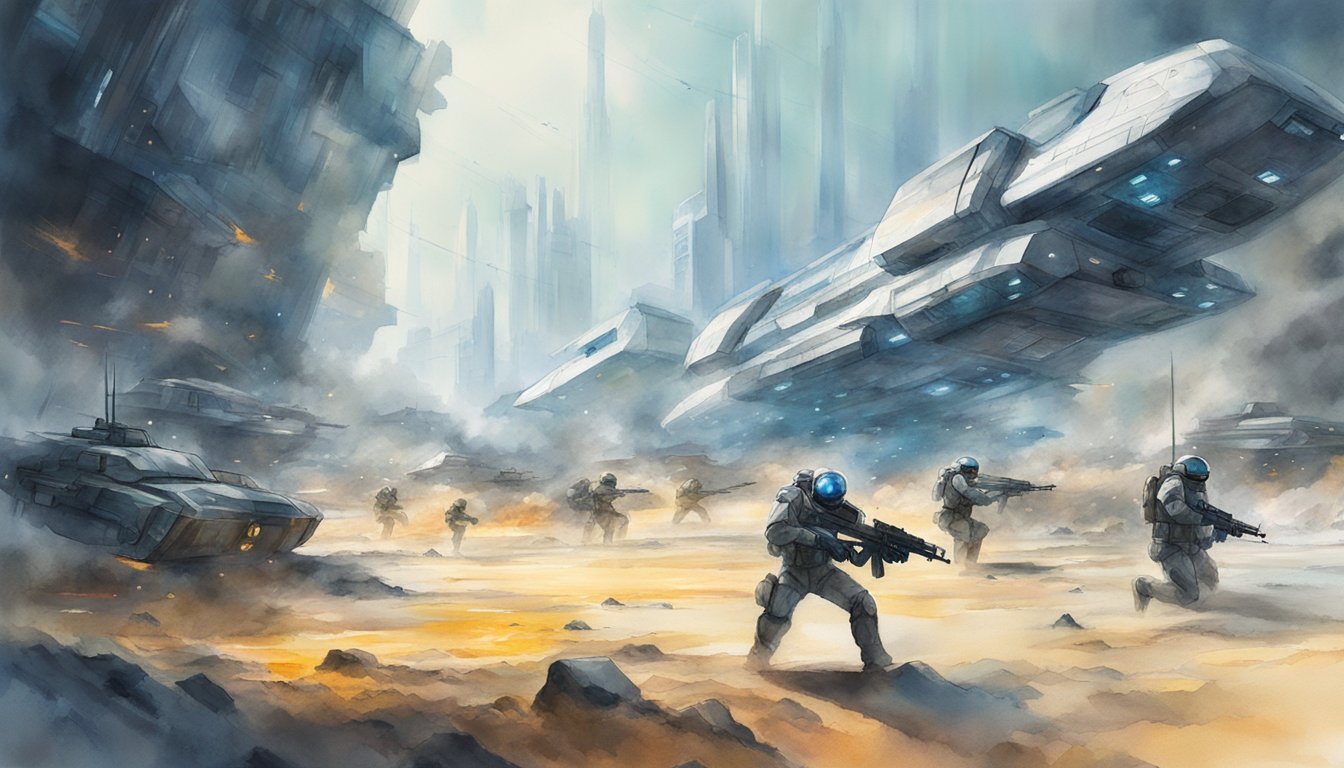
Space and cyber domains are transforming modern warfare.
Both are crucial for intelligence, communication, and navigation, giving military forces strategic advantages and enhancing threat defense.
Strategic Advantages in Space
Space plays a pivotal role in military operations.
Satellites provide real-time communication, crucial for coordinating missions across vast distances.
This ensures that all units stay synchronized.
Moreover, satellites assist in navigation through GPS, allowing for precise movements and targeting.
Space also enhances situational awareness.
By monitoring troop movements and missile launches, it gives commanders a clear picture of the battlefield.
China’s use of quantum-encrypted satellites exemplifies how space tech can secure communication channels, making them immune to interception.
Additionally, space-based assets can support cyber warfare.
For instance, space-based servers can distribute cyber operations, making them harder to target.
Cybersecurity and Threat Defense
The cyber domain offers unparalleled intelligence gathering capabilities.
Cyber tools can infiltrate enemy networks, uncovering plans and weaknesses.
This intelligence can then be used to counteract threats before they materialize.
Managing cyber threats requires advanced defense mechanisms.
AI integration in cyber defense allows for faster response times to attacks.
It reduces the need for human intervention, as noted in predictions for the integration of AI in cyber warfare.
Moreover, covert cyber operations provide an asymmetrical advantage.
Smaller, technologically advanced forces can disrupt larger adversaries without engaging in traditional combat.
This covert nature is recognized as a key factor in future cyber operations described by John Arquilla.
Global Defense Alliances and Dynamics
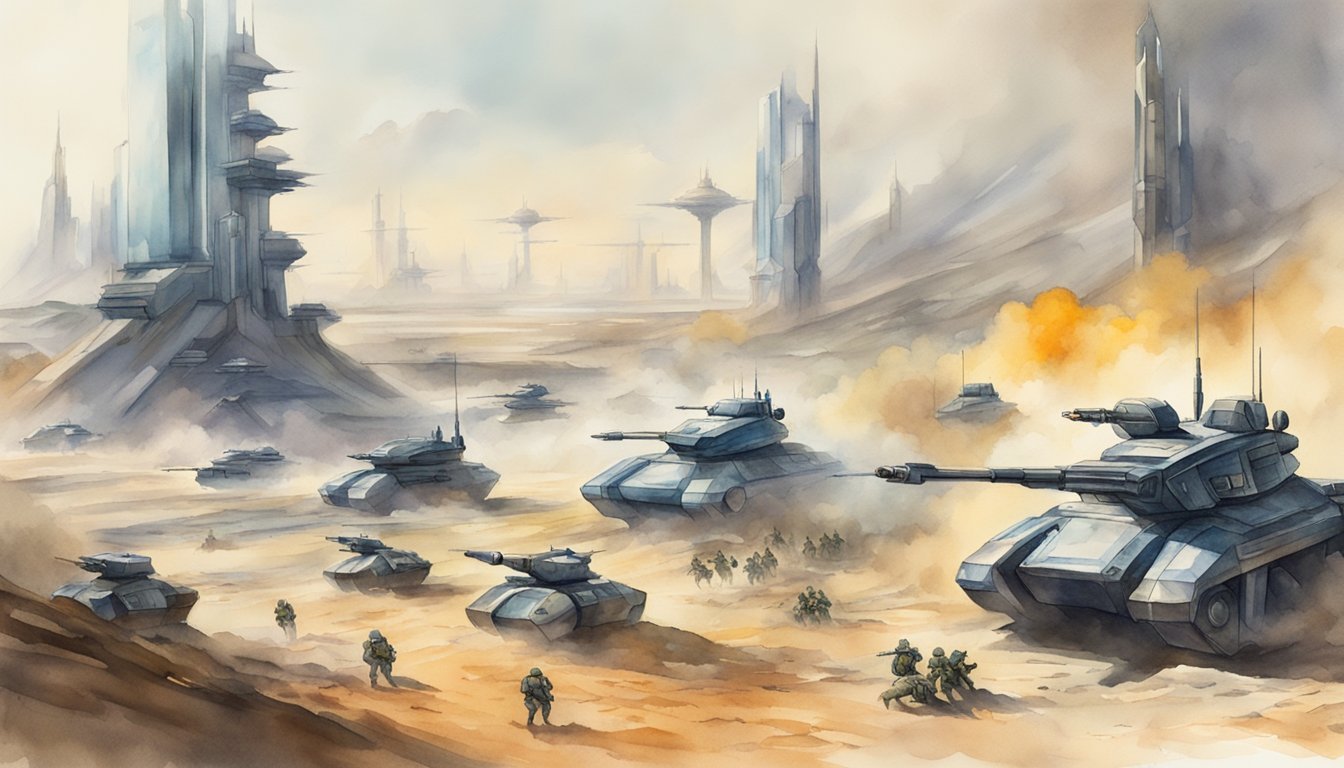
Geopolitical shifts are influencing defense strategies, including NATO’s adaptation and changes in U.S. alliances.
These trends will continue to shape military operations and relationships worldwide.
The Role of NATO and Member States
NATO has been central to global defense, providing a unified military front.
Member states contribute troops and resources to joint missions, such as those in Afghanistan and Syria.
The alliance has to adapt to new threats like cyberattacks and insurgencies.
The presence of a revanchist Russia poses significant challenges.
NATO members, particularly frontline states like Poland and the Baltic countries, are ramping up their defenses.
Member states must maintain their defense budgets and modernize equipment.
Joint training exercises and shared intelligence enhance the alliance’s effectiveness.
This cohesion is crucial for countering evolving threats and ensuring collective security.
US Alliances in Shifting Geopolitical Ecosystem
The U.S. has long-standing alliances in Europe and Asia that are key to projecting power.
Allies like Japan, South Korea, and Australia play critical roles in regional stability.
These partnerships are being tested by China’s rise and Asia’s realignment.
The U.S. is also recalibrating its approach in the Middle East, balancing relationships with traditional partners like Israel and new alignments with Gulf states.
The turmoil in the Islamic world, including ongoing conflicts in Syria, requires flexible strategies.
Collaboration with RAND Project Air Force helps shape these strategies, ensuring the U.S. Air Force remains effective.
Joint Force initiatives integrate capabilities across branches and with allies, strengthening the U.S. military’s global reach.
Military Operations in Navigating Political Climates
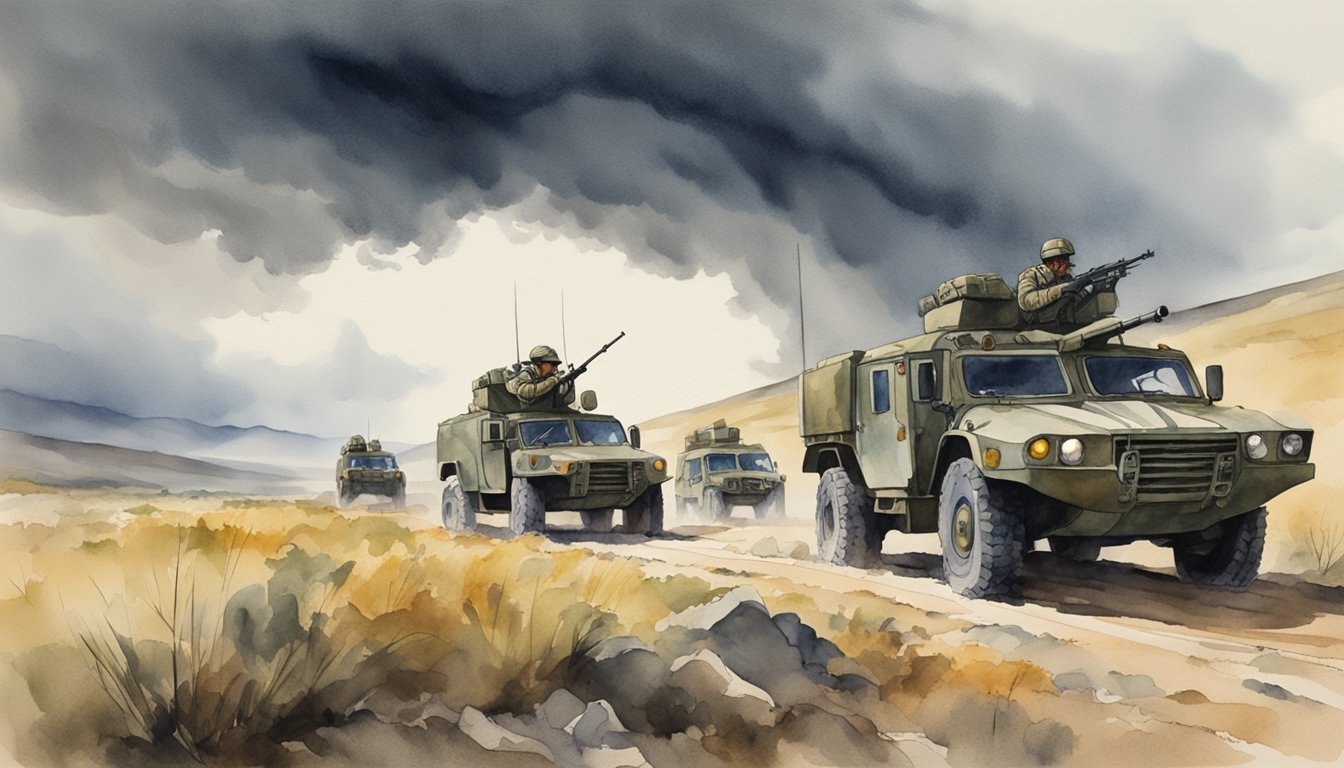
Modern military operations often face complex political environments.
Tasked with counterterrorism and conventional warfare, navigating these climates requires strategic adaptability and foresight.
Counterterrorism in a Polarized World
Counterterrorism efforts are increasingly complicated by political polarization.
In regions like the Middle East, terrorist groups exploit political divisions to strengthen their influence.
This makes it tougher for military forces to operate, as they must balance counterterrorism efforts with managing local and international political sensitivities.
U.S. polarization also affects military strategies.
Different political factions view threats differently, leading to shifts in counterterrorism policies.
To effectively combat terrorist groups, you need flexible tactics that can adapt to evolving political climates.
Cooperation with local governments and international allies is critical, as it helps build a united front against extremist threats.
Conventional Warfare amid Political Unrest
Political unrest can significantly impact conventional warfare.
Take the ongoing turmoil in Europe and Asia.
Changes in alliances and power structures force you to reassess traditional military strategies.
The rise of countries like China and a reassertive Russia presents new challenges and opportunities for military operations.
Political climates can lead to unpredictable adversaries and shifting battle lines.
You must stay informed about current political shifts to anticipate potential conflicts.
Adapting traditional military tactics to current political landscapes is essential.
This means incorporating intelligence from various sources and staying adaptable to immediate changes in the field.
By staying vigilant and adaptable, you can navigate the complex political climates influencing modern warfare.
Preparing for Warfare in the Information Age
In modern warfare, information has become a crucial battlefield.
Effective handling of data and mastering propaganda and influence operations are essential for military success.
Data as a Weapon
Data is now as powerful as traditional weapons.
Military operations can leverage data to predict enemy movements, optimize strategies, and ensure effective decision-making. Artificial intelligence plays a critical role here by analyzing vast amounts of data and extracting actionable insights quickly.
You will see the military using information warfare to disrupt enemy communications.
Techniques like cyber-attacks can cripple an opponent’s command structure.
Managing connectivity and ensuring secure lines of communication are essential to prevent enemy infiltration.
Rapid data sharing and analysis can also improve tactical decisions on the battlefield. Content gathered from drones, satellites, and other surveillance tech must be processed efficiently.
Keeping up with technological advancements ensures that your armed forces stay ahead of potential threats.
Propaganda and Influence Operations
Propaganda has always been an essential tool in warfare.
In the information age, this takes on new forms.
Social media and other digital platforms are used to sway public opinion and sow discord among enemy ranks.
Your military must be adept at using communication channels to counteract enemy propaganda.
This involves producing and spreading content that supports your objectives while discrediting misinformation from opponents. Artificial intelligence can help identify trends and sentiment to tailor these operations effectively.
Influence campaigns target not just enemies but also allies and neutrals.
Building a positive image and maintaining strong alliances through strategic communication are crucial.
The goal is to win hearts and minds, reducing the enemy’s ability to recruit and garner support.
Effective information warfare means controlling the narrative, both on the home front and in enemy territories.
It is about using the power of information to weaken your adversary while strengthening your position.
Challenges and Solutions in Defense Logistics
Modern warfare faces complex logistical challenges.
With new threats and technological advancements, the military must adapt to maintain efficiency and readiness.
Innovation in Military Supply Chains
In military logistics, innovation is crucial for keeping up with the fast pace of conflict.
To meet these demands, integrating automation and intelligence like AI simplifies processes.
Automated aircraft and rockets ensure swift, accurate supply deliveries.
Advanced devices monitor supply routes, detecting vulnerabilities and predicting potential issues.
Such technology minimizes risks and enhances response times.
Innovation isn’t just about new tech.
It’s also about adapting existing methods to improve resilience and flexibility.
Rapidly deploying resources from multiple sources and ensuring they reach their destination safely is key to success.
Using cutting-edge solutions helps maintain a strategic advantage in warfare logistics.
Future Threats and Defense Mechanisms
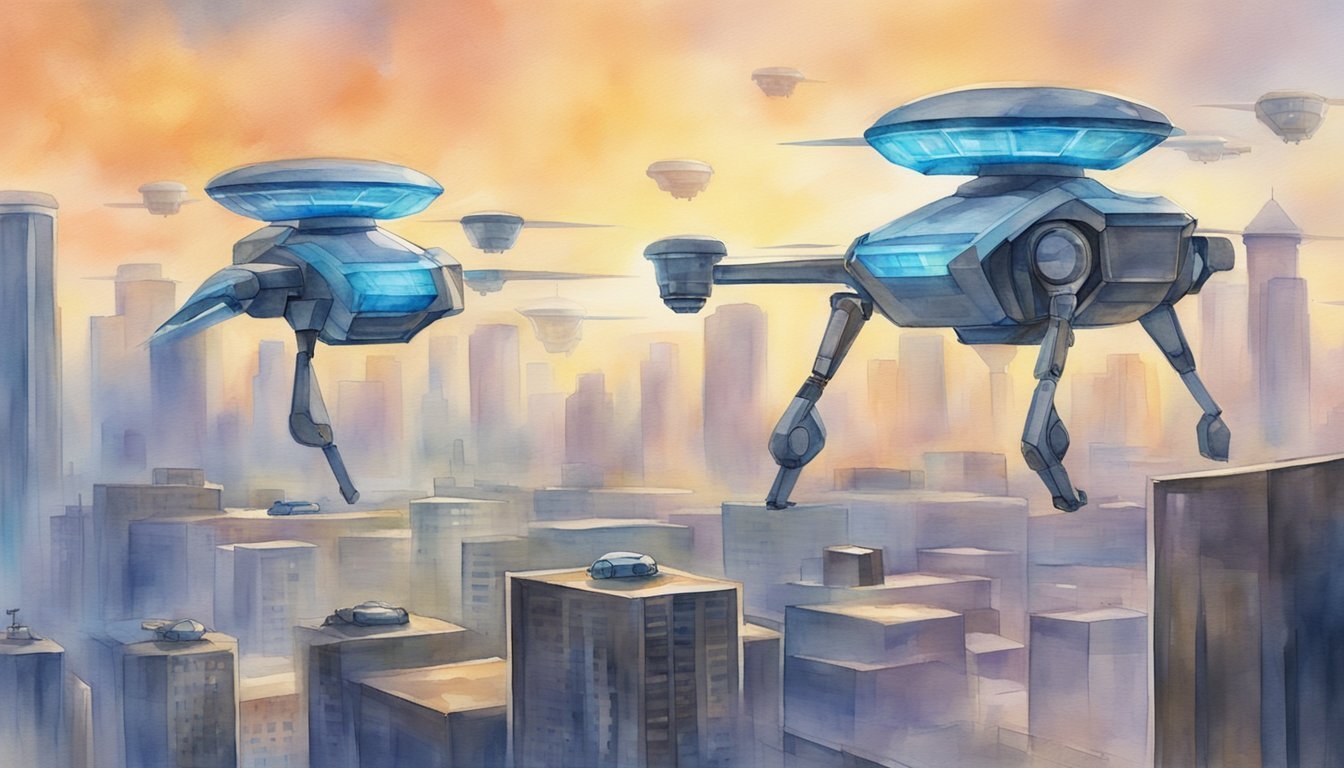
As we look ahead to 2030 and beyond, you should consider the new threats on the horizon and the defense measures to counter them.
The nature of warfare is changing with advancements in technology and shifts in global power dynamics.
Emerging Threat Landscapes
The rise of hypersonic weapons is changing the game.
These weapons travel at speeds over Mach 5, making them hard to detect and intercept.
Countries like China and Russia are investing heavily in hypersonic technology, posing a significant threat to traditional missile defense systems.
Cybersecurity threats are also a growing concern.
Adversaries can launch cyberattacks to disable critical infrastructure, disrupt military operations, or steal sensitive information.
North Korea and other state actors are enhancing their cyber capabilities, making cybersecurity a top priority for the Department of Defense.
Drones and autonomous systems are becoming more prevalent on the battlefield.
These technologies offer precision and reduced risk to human soldiers.
However, they also present new challenges, as adversaries can deploy them in swarms or use them for targeted attacks.
Finally, traditional military threats remain relevant.
The ongoing conflict in Ukraine highlights how conventional warfare tactics still play a crucial role.
You should watch for the proliferation of advanced military equipment and technology to less stable regions, which can escalate conflicts rapidly.
Evolving International Norms and Warfare Regulations
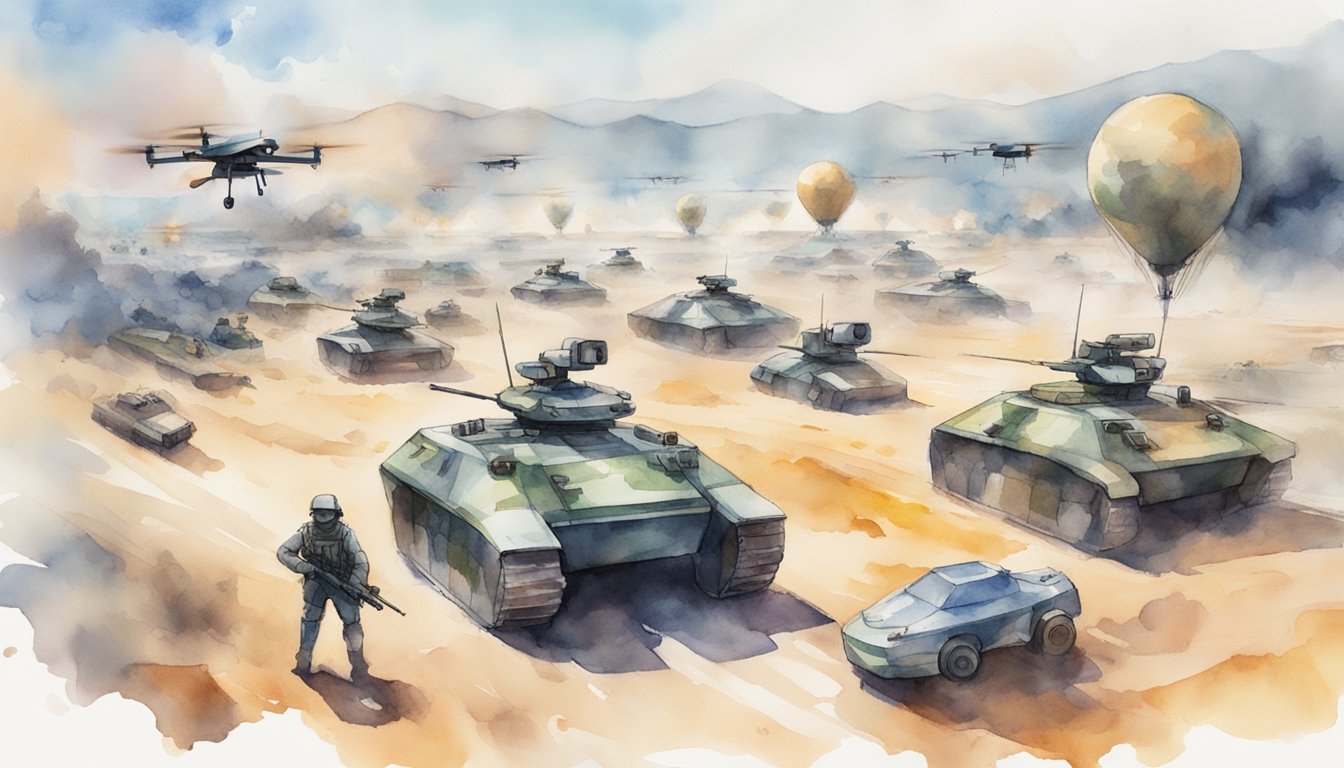
Evolving international norms and regulations shape how military conflicts are conducted, emphasizing ethical conduct and technological advancements in warfare.
These changes influence the behavior of nations, including the rise of China’s military capabilities.
Diplomacy and Warfare Ethics
International norms are constantly changing due to the ongoing dialogue between countries.
Diplomacy plays a key role in establishing agreements that limit certain types of warfare, such as the use of chemical and biological weapons.
You can see these principles in various doctrines used by military forces internationally.
Warfare ethics extend to protecting civilian lives and minimizing collateral damage.
These ethics are supported by international laws like the Geneva Conventions.
Countries like China have shown interest in adapting to these norms in light of their rising global influence.
Regulatory Implications for New Technologies
New technologies like drones and cyber warfare tools present unique challenges for international regulations.
The rapid advancement of these technologies can disrupt existing frameworks.
Governments and military leaders must work together through consultation to create effective rules.
Regulations must address issues like autonomous weapons and cybersecurity threats.
These rules are crucial for maintaining global stability and preventing misuse.
For example, the United States and other countries may develop agreements that set limits on AI usage in warfare, reflecting the principles of responsible innovation.
Frequently Asked Questions

In the future, expect major shifts in how wars are fought due to new technologies and changing global politics.
Key trends include the rise of AI, advanced weapons, cyber warfare, autonomous robots, space as a battlefield, and the influence of geopolitical changes.
How is AI expected to change military strategy by 2030?
AI is likely to make military operations faster and more efficient.
You might see AI used for real-time data analysis and decision-making.
This could lead to smarter targeting and improved defense systems.
AI could also help in logistics and supply chain management, making your operations smoother and more reliable.
What kind of weapons can we predict will dominate future conflicts?
Expect to see a surge in precision-guided munitions and hypersonic missiles.
These weapons will be faster and more accurate, making them difficult to defend against.
Lasers and directed energy weapons could also become more common.
You might even see advanced drones equipped with new weaponry, changing how air battles are fought.
How might cyber warfare evolve in the next decade?
Cyber warfare will likely become more prevalent and sophisticated.
You could see attacks focusing on critical infrastructure like power grids and communication networks.
Nations might develop offensive cyber capabilities to disrupt enemy operations.
Protecting your systems will require constant updates and new defense strategies to stay ahead of potential threats.
Will autonomous robots become central to battlefields of the future?
Yes, autonomous robots are expected to play a big role.
These robots could handle dangerous tasks, reducing risk to soldiers.
You might see them used for reconnaissance, mine detection, and even direct combat.
As technology advances, these robots will become more capable and reliable, potentially changing how battles are fought on the ground.
What role will space play in warfare going forward?
Space could become a key battleground.
Satellites are crucial for communication, navigation, and surveillance.
You may see nations developing anti-satellite weapons to disrupt these capabilities.
Space-based lasers and other weapons might also be deployed.
Securing your assets in space will become increasingly important.
How are global politics shaping the next generation of military technologies?
Global political shifts are driving military advancements.
The rise of China and a resurgent Russia are leading to new arms races.
You might see increased investment in cutting-edge technologies to maintain strategic advantages.
Alliances and partnerships will also shape the development and deployment of these technologies, impacting your strategic decisions.
For more information, you can visit articles like the one on Geopolitical Trends and the Future of Warfare.






